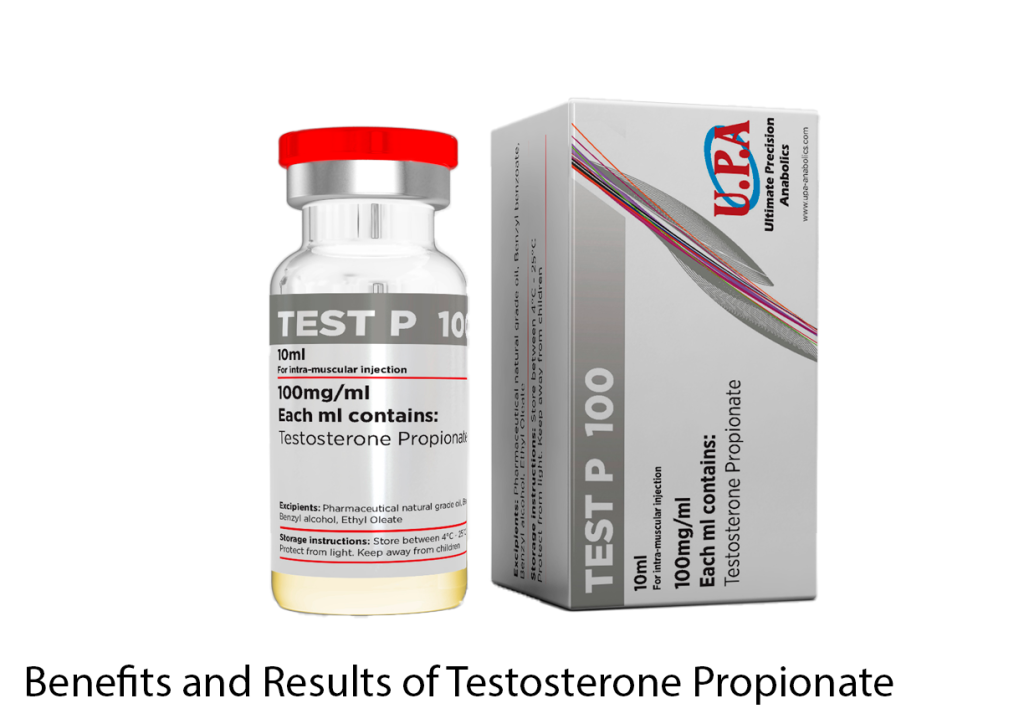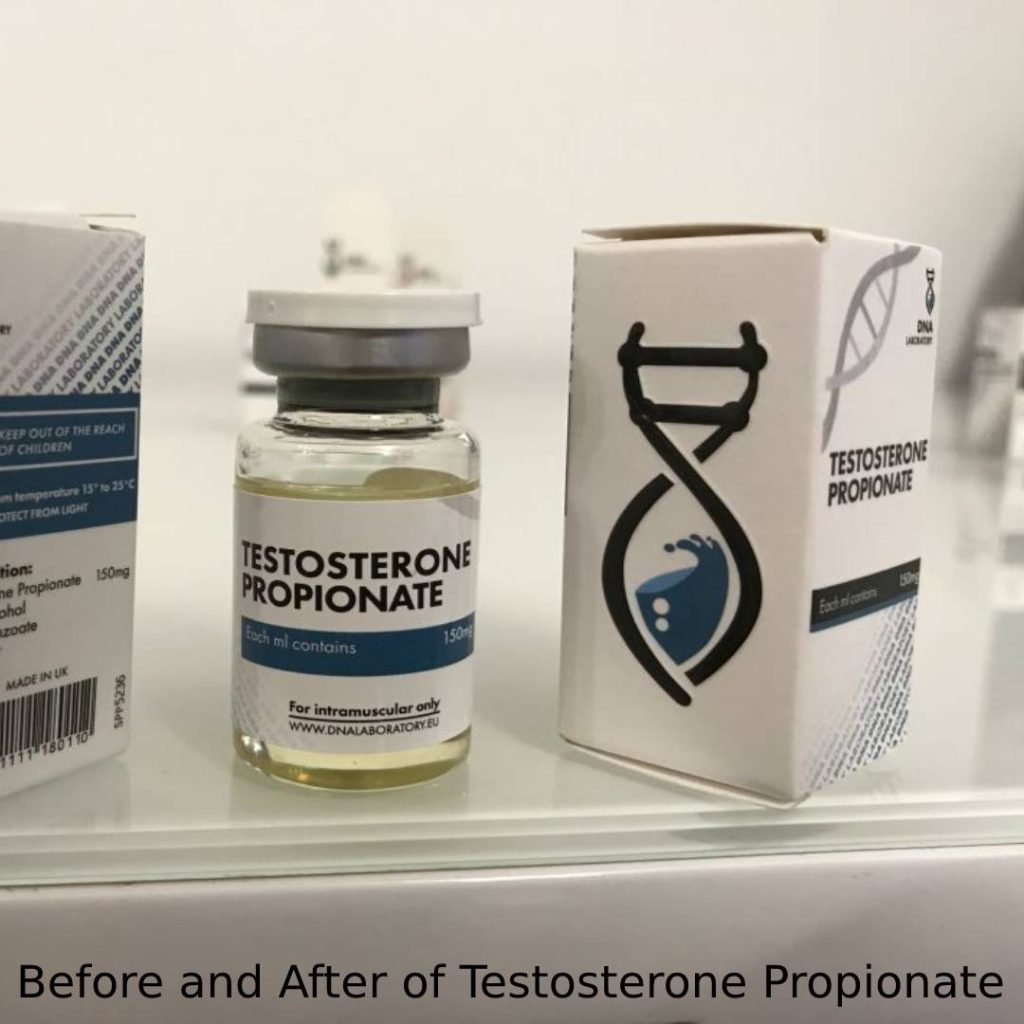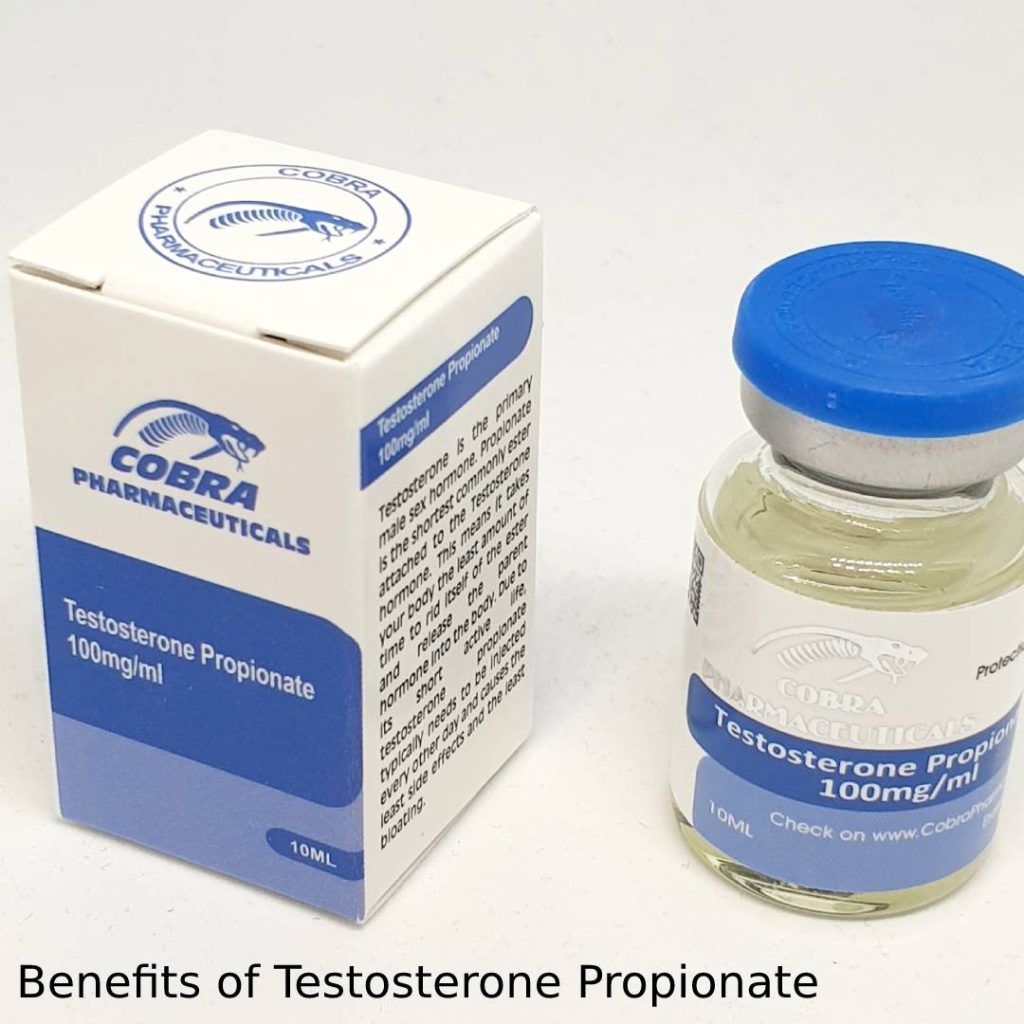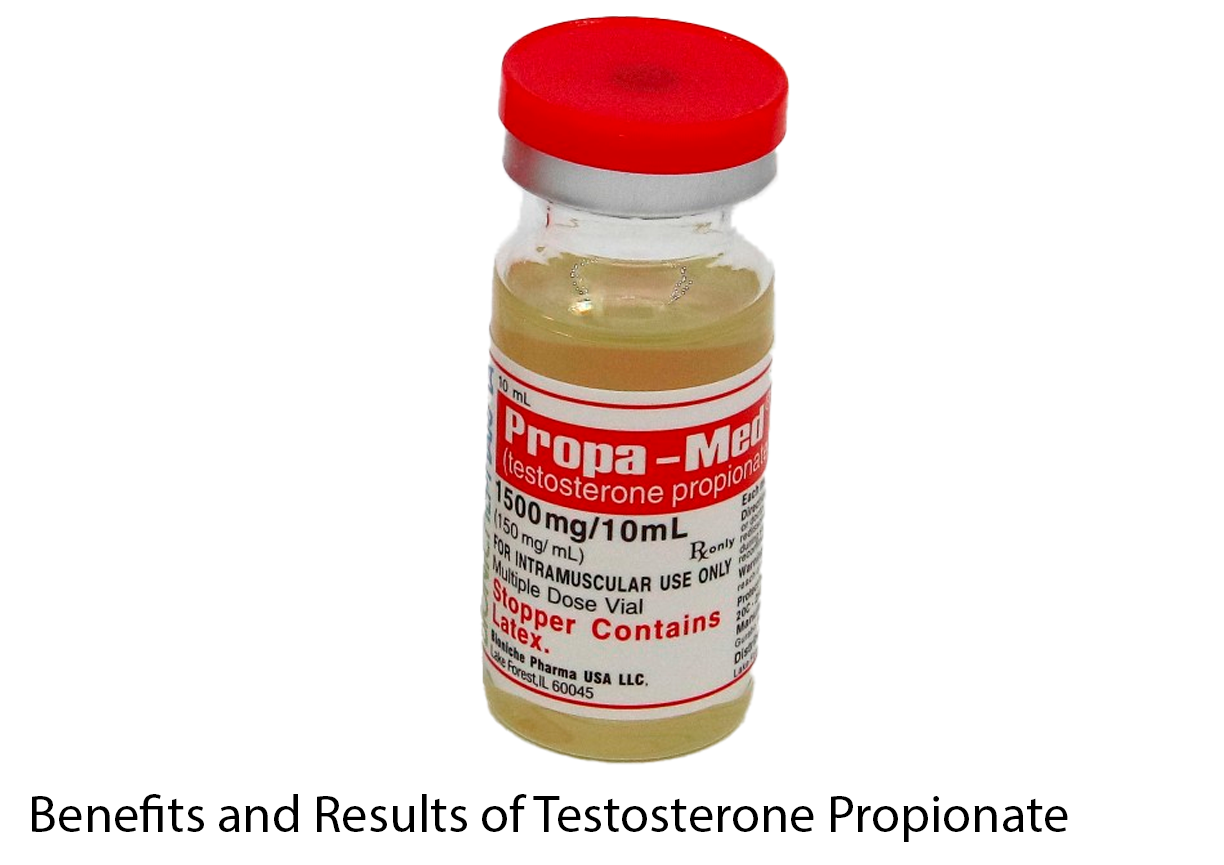Testosterone was the first successfully synthesized anabolic steroid. Testosterone propionate is a fast-acting, short-acting, oil-based injectable testosterone compound that is commonly prescribed to treat hypogonadism — low testosterone levels and a variety of related symptoms in men.
Testosterone propionate was first described in 1935 to increase the therapeutic utility of synthetic testosterone by slowing its release into the bloodstream. Two years later, Schering AG in Germany released a testosterone-enanthate hybrid blend for clinical use under the brand name Testoviron. It was the first commercially available version on the U.S. prescription drug market, and before 1960, it remained the dominant form of testosterone worldwide.

Testosterone is the primary androgen in the body. Endogenous testosterone is synthesized by cells in the testes, ovaries, and adrenal cortex. Therapeutically, testosterone is used to treat congenital or acquired hypogonadism. Testosterone is also the most effective exogenous androgen in the palliative treatment of breast cancer in postmenopausal women.
Testosterone was used in 1938 and approved by the FDA in 1939. Anabolic steroids, testosterone derivatives, have been used illegally and are now regulated substances. Testosterone, like many anabolic steroids, was classified as a regulated substance in 1991. Testosterone is administered parenterally in regular and sustained release (depot) dosage forms. In September 1995, the FDA originally approved testosterone transdermal patches (Androderm); a number of transdermal forms and labels are now available, including implants, gels, and topical solutions.
In July 2003, the FDA approved the testosterone buccal system, Striant; the system is a mucoadhesive product that adheres to the oral mucosa and provides controlled and sustained release of testosterone. In May 2014, the FDA approved the intranasal gel formulation (Natesto). A transdermal patch (Intrinsa) for hormone replacement in women is being studied; the daily doses used for women are much lower than those used for men. At the end of 2004, the FDA decided to postpone the approval of Intrinsa female testosterone patches and requested more safety data, especially for cardiovascular and breast health.
Before and After of Testosterone Propionate
They allow you to gain a large amount of muscle mass as quickly as possible and also allow you to solve any other problems. Specifically, we can talk here about drying the body, which will ultimately improve the relief of your muscles.
But if we are talking about propionate, then here we are talking about a set of muscle mass. Of course, in some situations it can also be used for drying, but here we are talking about complexes consisting of different steroid preparations. If we talk about its exclusive use, otherwise here we can only talk about building muscle tissue.

Otherwise, this drug may simply not be the most effective for you. But when it comes to gaining muscle mass, it is one of the leading drugs on the market. This is the reason for its popularity in different countries of the world.
This drug can solve this problem with the help of its main effect on the body. It is in fact a synthesized male hormone that can directly influence the activity of muscle tissue. The use of propionate, as it were, directly tells the body that it is time to build muscle mass. The body cannot ignore this request and reacts positively to it.
As a result, the athlete has the opportunity to build muscle mass as quickly as possible, and if we are talking about the complex use of several steroids at the same time, there may also be a direct relief effect on the body. Furthermore, propionate can also increase the athlete’s endurance, which certainly has a positive effect on the efficiency and effectiveness of his training.
Benefits of Testosterone Propionate
External testosterone propionate is the same as for all forms of testosterone, where the choice of ester depends primarily on the availability and desired half-life, as well as the convenient frequency of injections.
This, in turn, is related to how stable the steroid blood levels are, and testosterone prop has some advantages in this regard, as more frequent injections (due to the short half-life of the ester) ensure that blood levels are kept at optimal levels.
Due to its excellent anabolic activity, testosterone propionate has a number of benefits that increase performance and results. These include the main areas of anabolic processes in the body:

Enhances protein synthesis – This gives you a massive improvement in recovery and the growth of muscle tissue, since this process is how proteins are built by cells. The more efficient protein synthesis is, the faster your muscles recover from intense workouts and the quicker the muscle is repaired and grown.
Improves nitrogen retention – This is a critical process to keeping your body in the best anabolic state possible. When nitrogen becomes imbalanced, the body can fall into a catabolic state where you start losing muscle; this is to be avoided at all costs and the retaining of nitrogen ensures that your nitrogen output is lower than your intake of nitrogen – this is the prime state to be in for muscle growth. The better that nitrogen is balanced, the quicker the muscles recover the and faster they grow.
Increases red blood cells – More oxygen and nutrients get into the muscles with greater blood flow, increased muscle endurance, so you can train harder and longer. Recovery also improves with a higher number of red blood cells.
Boosts insulin growth hormone – This anabolic hormone is vital for many aspects of your bodybuilding goals: it’s involved in mass gain, endurance, fat burning and also boosts protein synthesis which in turn directly contributes to recovery through the repair of muscle tissue.
Reduces stress hormones – In particular testosterone inhibits glucocorticoids. While these are important hormones in some ways such as for fighting inflammation, they can also promote wasting of the muscles and fat gain.
Other benefits of this testosterone ester are:
It delivers fast results and is quick to leave the body compared with other esters
Useful for cutting cycles and muscle gains
More ideal for beginners and females compared to more slower release esters
Testosterone helps to stop glucocorticoid hormones from dominating so the body can retain a higher anabolic environment rather than a more catabolic one which can occur when glucocorticoids become too dominant. This is one of the most important yet little known or understood aspects of using testosterone steroids.
Results of Testosterone Propionate
“Testosterone Propionate” – a short ester “reference” androgen, can be used to treat androgen deficiency when you need to “work” quickly, efficiently and inexpensively. For example, there are situational decreases in testosterone, whether the patient is allergic and it is not clear how he will respond to testosterone therapy, whether this is a child (but not a teenager! – its use is contraindicated), or when you are taking it effect of long testosterone “grinding”. Here in such cases, testosterone, with propionate ester – “handsome”. In addition, it can be used in short courses for oligospermia.
The course is individual, calculated for each individual patient, but it should be understood that the real effective dosage is at least 400 mg per week for an adult male, the period of activity of the substance is up to 3 days. The course of therapy can last up to 6 weeks. Does not cause such fluid retention as testosterone long esters. In general, it has fewer side effects than other testosterones due to its short period of activity.
Everyone knows, not even health professionals, that the drug is prescribed for men. But it can also be used in gynecology and with neglected fibroids in premenopausal age, and with endometriosis and with replacement therapy for oophorectomy. During 36 years of working as a gynecologist, I have a unique experience in treating female infertility with this drug. Strange or absurd as it sounds. Microdoses of this drug can also be used successfully in the treatment of dysfunctional uterine bleeding.
